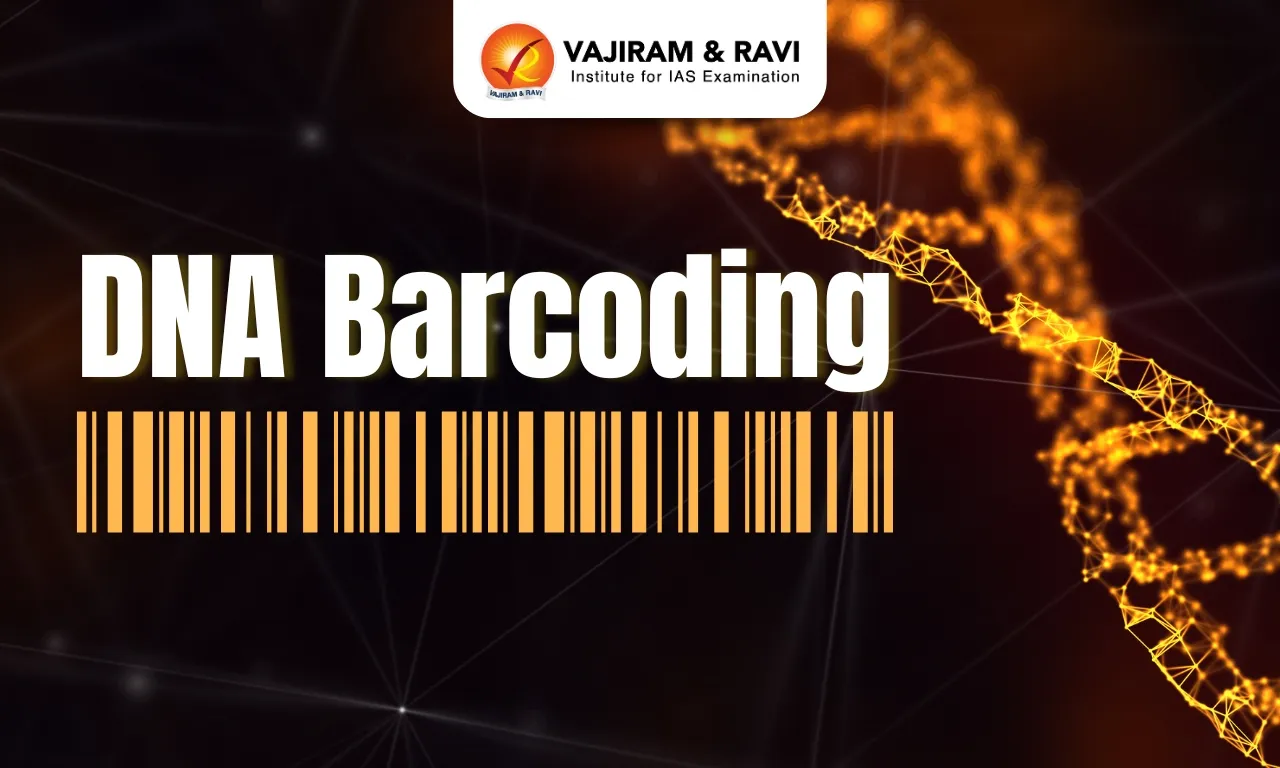DNA barcoding is a technique for identifying specimens by analysing small, standardised DNA segments. Each species possesses a unique genetic barcode, similar to the distinct fingerprint of each individual. This technique transcends morphological and physiological limitations, enabling identification without extensive taxonomic expertise.
By exploiting sequence variations within a standardised genomic region, termed the “barcode,” DNA barcoding facilitates precise species identification. This innovation, similar to genomics in gene analysis, revolutionises species identification, aiding conservation, bioprospecting, and education. Its potential extends to uncovering new species yet to be documented, promising a transformative impact on our understanding and management of biodiversity.
Process of DNA Barcoding
DNA barcoding tools have been developed for the species identification of plants, fungi, and invertebrates such as birds, fish, and mammals. Following are the steps of DNA barcoding:
- Sample collection: A small sample of tissue is taken from the organism to be identified.
- DNA extraction: DNA is extracted from the tissue sample.
- DNA amplification: A specific region of DNA from a specific gene or genes is amplified using a technique called polymerase chain reaction (PCR).
- PCR is a method of copying DNA millions of times, which makes it possible to work with very small amounts of DNA.
- DNA sequencing: The amplified DNA is sequenced.
- DNA sequencing is a method of reading the order of nucleotides in a DNA molecule.
- DNA sequence analysis: The DNA sequence is compared to a reference library of DNA barcodes.
- If the DNA sequence matches a barcode in the reference library, then the organism is identified.

Significance of DNA Barcoding
This technique opened up new doors for DNA-based examinations extending from group phylogenetics to environmental genomics.
- It is used to build phylogenetic trees and provide rapid and accurate identification of unknown organisms.
- This has led researchers to use DNA barcoding techniques to evaluate the authenticity of herbal products.
- It can be used to identify organisms from a variety of tissues.
- DNA barcoding can be used to identify organisms from tissue, hair, feathers, and even environmental samples such as soil or water.
- It is a very accurate method of identification & is accurate for over 95% of species.
Applications of DNA Barcoding
It is used for more than just research – it can also help address problems with broad impacts on all areas in which society interacts with biodiversity. There are many applications of DNA barcoding and reasons why it is important for scientific discovery, human health, and the health of our planet.
- Species Discovery: It is primarily used for the discovery and identification of all multicellular life on Earth.
- Ecological assessment for conservation: Helps in understanding biodiversity and the effect of anthropogenic changes to make predictions for species survival and the planet’s future.
- Distinguishing Cryptic Species: These are species that appear identical but are genetically distinct, which can have important implications for biodiversity, wildlife management, and disease control.
- Diet Analysis: Nutritional recommendations can be personalised based on an individual’s gut microbiota and mycobiome to optimise health outcomes.
- Authentication of Phytomedicinal Admixtures: DNA Barcoding can be used to ensure the biological authentication of ingredients and to identify contaminants in herbal products.
- Food safety: It can help to reduce the microbiological and toxicological risks associated with food and food products. It has the potential to be the gold standard for detecting food authenticity and fraud.
- Agriculture: DNA Barcoding can be used to identify specific species of pests, which can help farmers target their control efforts more effectively.
- It can be used to identify invasive species that may not be native to an area, which can help prevent the spread of these pests and limit their impact on crops.
Limitations of DNA barcoding
The main limitation of current DNA barcoding techniques is the possibility of erroneous results when DNA is degraded (or when large amounts of DNA from other species are present).
- Barcodes for plants: Establishing robust DNA barcodes for plant specieshas proven to be a more challenging task compared to that for animal species.
- Illegal Wildlife Trade: DNA barcoding, while effective in identifying species, may not be sufficient to determine the country of origin in case ofillegal wildlife trade.
- Identification of hybrid species: It is not suitable for identifying hybrid species or species that can naturally hybridise.
- This is because DNA barcoding relies on a single gene region, and hybrids or closely related species may have different sequences for this region.
- The DNA Barcoding method is not capable of determining the chemical constituents or plant parts of processed products or quantifying the amount of plant material used in the product.
Last updated on April, 2025
→ UPSC Notification 2025 was released on 22nd January 2025.
→ The UPSC Vacancy 2025 were released 1129, out of which 979 were for UPSC CSE and remaining 150 are for UPSC IFoS.
→ UPSC Admit Card 2025 is released now for CSE Prelims Exam 2025.
→ The UPSC Prelims 2025 is scheduled to be conducted on 25th May 2025 and UPSC Mains 2025 will be conducted on 22nd August 2025.
→ Apply once through it and aspirants can apply for various government exams conducted by UPSC.
→ The UPSC Selection Process is of 3 stages-Prelims, Mains and Interview.
→ UPSC Result 2024 is released with latest UPSC Marksheet 2024. Check Now!
→ UPSC Toppers List 2024 is released now. Shakti Dubey is UPSC AIR 1 2024 Topper.
→ Also check Best IAS Coaching in Delhi
DNA Barcoding FAQs
Q1. What is DNA Barcoding?+
Q2. What is DNA Barcoding used for?+
Q3. What is PCR used for in DNA Barcoding?+
Q4. Who developed DNA Barcoding?+
Tags: dna barcoding quest
















